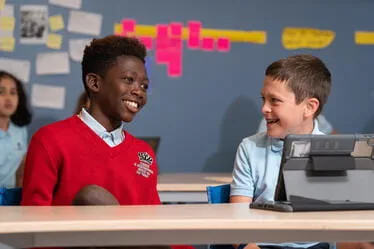This year I was asked to be the Early Years representative for maths.This year I was asked to be the Early Years representative for maths.

This year I was asked to be the Early Years representative for maths.This year I was asked to be the Early Years representative for maths.

This year I was asked to be the Early Years representative for maths.This year I was asked to be the Early Years representative for maths.
This provided me with the opportunity to work with colleagues throughout the school to develop a consistent approach to maths at BISH. During one of our meetings, the subject of resources came up. We would be able to pitch for resources we needed in an upcoming budget meeting. After reflecting on what maths resources we needed for Early Years, and discussing it with the other members of the Early Years team, I couldn’t help but wonder, how much would the children really achieve by just playing a counting game ordered from a catalogue?
Children are, by nature, very mathematically curious without even knowing it. In our Early Years setting, we encourage children to use everyday materials to support their mathematical thinking. The examples of materials which help relate ‘school’ mathematics to everyday applications are endless, but could include packaging materials, patterned fabric or paper, timetables, receipts, catalogues, scaled plans, photographs of shape/number in the environment and any form of container or measuring device. The use of such resources also develop children’s understanding of some of the purposes of mathematics in real-life contexts.
Edwards (1998) found that the value here lies in the fact that ‘handling of familiar “everyday” objects enables children to learn about their properties and components’. Through manipulating familiar objects and materials, children are helped to rationalise their experiences.
I believe that in our setting, maths is not limited to our 15 minute daily carpet session, using the classic maths resources. Whilst it is true that certain manipulatives, such as ‘Multibase’, can support children with the place value system, it is important that we do not limit them to thinking only such resources are used “when it’s time for maths”. Ball (1992) noted that ‘although kinesthetic experience can enhance perception and thinking, understanding does not travel through the fingertips and up the arm’. At BISH we endeavour to establish a discourse between the child and the teacher which will allow the child to bridge the gap between the materials and the abstract ideas. MacLellan (1997) found that without some accompanying mental activity to reflect on the purpose and/or significance of the physical activity, concrete materials will not actually enable the child’s mathematical understanding to develop.
With this in mind, I was very pleased to see children engaging in mathematical experiences through their play, whilst I was observing this week. The children in our setting are not just using their maths skills during adult directed activities, but rather they are unknowingly developing their mathematical thinking through their play.
For example, Jensen and Zhiyan had worked together to build a replica of the Empire State Building in the construction area. Having seen a picture of the skyscraper, they have deliberated and chosen shapes which closely resemble those in the real structure. Their building was also perfectly symmetrical and they had purposefully not built it too tall so it would be sturdy. The boys had also decided to use some of the blocks and boards to attach a carpark to their building. Using cars from the toy box, they held the car at the top of their car park and tested how it would roll down. This was Jensen and Zhiyan’s way of working out angles.
Paula had brought in a selection of toys from home. During self-initiated learning time, she emptied out her toys onto the carpet and proceeded to sort and order them by size. Paula then accurately counted that she had brought 14 toys in.
Anas had decided to make his own shop and he wrote down the opening hours of the shop. Here, by using number, Anas is in the early stages of recording by using marks he could interpret and explain.
Whilst waiting in a line for the toilet, Craig and Saxon were having a debate on who was taller. Saxon was using his hand to measure himself against Craig, and Abinaav had the idea for the boys to stand back to back for a direct comparison.
These are just a few examples of how children are self-initiating their own maths activities and making sense of the world around them. Grossman (2012) very much reflects our own philosophy that open-ended, playful exploration encourages children to solve problems in real situations. Because the situations are meaningful, children can gain a deeper understanding of number, quantity, size, patterning, and data management
We do also greatly value the importance of modelling to children mathematical thinking through formal teaching activities and this builds confidence. I was delighted to see, however, that the children in our setting are exploring their own mathematical curiosity as they have the freedom to use materials in authentic ways.